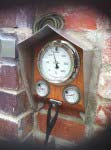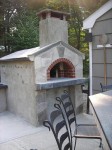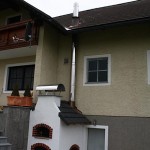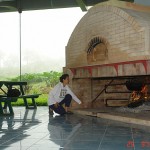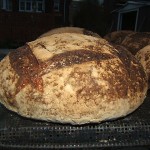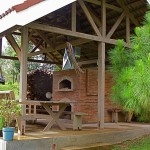back to board Main Page
Re: Insulation vs. Mass
From the WFO board
Posted by Rado (144.134.149.170)
In Reply to:Insulation vs. Mass posted by Jerry
Hi Jerry,
Thanks for posting in, first on the insulation and further below on FireBricks.
I also take side of to over building things, I like the way old tradesmen did things. Commercial production now days is cost saving driven and not to last long time with mind on selling spare parts and fix up as soon as it is not too visible, nothing much sold out there on offer is energy saving effective any more ;o)
Good idea yes you can hold baking/roasting temperature for 5-6 time by storing more energy in and good insulation. I add extra heat storage in cladding layer, 2-3" - 5-7.5cm (no need to go for 4" - 10cm only if it was bigger oven.)
Insulation; yes you can use rockwool or fiberglass over the vermiculite (I am not exactly sure now what properties fiberglass has. I know it is used to insulate e.g. central heating hot water pipes or boilers but it is not refractory although could be added as last layer protecting soaking heat to escape.) Ceramic fiber blankets are great, for oven and alike these are being used in 3 most common grades:
1. Hot Face Blanket 1400 - this is layer hat will withstand 1400°C or 2552°F, not needed for wood ovens and it's more expensive too.)
2. Hot Face Blanket 1260 - it used for 1260°C or 2300°F, also grade far exceeding wood fire temperature on brick ovens but it is less dense and has smaller thermal conductivity then the 1400 grade, you can use this as firsts layer, 1" - 2.5cm or even 1/2" - 12.5cm thickness.
3. Back up Insulation Bats - 960°C or 1760°F range you can use these ones, they absorb a lot less heat also and are much cheaper.
Less dense the blanket is less can be put on it, blankets shouldn't be squashed. And with work with insulations, vermiculite including, the advice is breath through the respiratory mask - I don't always do so but it is the right thing to do, if you used it often, not to end up with silicosis (not as bad as asbestosis.)
DENSITY OF FIREBRICKS.
23% alumina firebricks are very good for building wood fired oven, but you can use also fire bricks with 38-40% alumina content to build wood oven - heat conductivity is @ 750°C is 1.07 - 1.13 W/m.°K. I only meant; high alumina content bricks are used in very high temps range furnaces the alumina make them to withstand this heat (1550°C), they also have higher Bulk Density weight 2100kg/m³. But increased mass weight changes heat absorption only marginally and is not too different, comparing with 23% alumina content firebricks that have weight 1860kg/m³ heat conductivity @ 750°C is 1.03 W/m.°K (or 24% alumina content firebricks having weight 1925kg/m³ heat conductivity @ 750°C is 1.05 W/m.°K.) What makes the high alumina content different is the cost price per each brick and is not necessary in cooking ovens but surely of course it is okay to use them. I always put door in after cooking so the oven cools down gradually slow after each cooking, so are kilns made of expensive material. Silica shrinks right at 200°C and every refractory contains silica. It is safe with bricks each of them is like small fragment and temperature differences in each firebrick is not too critical on cooling for it to crack. But in larger pieces e.g. the kiln furniture i mentioned, or larger oven floor tiles and blocks that it is put together from, the temperature differences are lot higher, hot in center and cold on edges makes nasty cracks. Best is to look after the oven ones built or at least to be aware about how it works and then in cold months closing it with wooden door after cooking. The bulk density and alumina content or heat absorbing mass isn't the major point in heat absorbing dialog, the cost and right material pick for certain temperature must be. Graphite is commonly used in industries using heat and when you look at physical properties of graphite and compare it with alumina it is a lot lighter in weight density and it absorbs much more heat.
Re: Insulation vs. Mass
- Re: Insulation vs. Mass - Alan
- Re: Insulation vs. Mass - Jerry
- Re: Insulation vs. Mass - Alan
- Re: Insulation vs. Mass - Alan
- Re: Insulation vs. Mass - Jerry
- Re: Insulation vs. Mass - Rado
- Re: Insulation vs. Mass - Jerry
- Re: Insulation vs. Mass - Jerry

Jamie and Katrina's brick oven with temperature gauge, in Victoria.
Concrete blocks used for the oven’s outer walls. By Joe in Connecticut USA
Wood fired family oven and chimney project by Robert in Austria
My oven with fireplace, cook food and heat water, by Joel in Philippines
Baking sourdough breads in quantity in Canada
Pizza oven and hut built by Tony in Philippines
